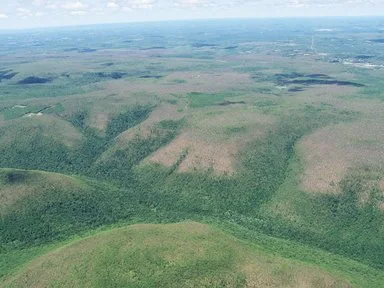The Spraying
In thinking about native plants for our area recently, I dug into my library and took a new look at a book I read 15 years ago. That book, Noah's Garden by Sara Stein, was one of my quickest reads, ever. I think that is because it fed something in me that I had a voracious appetite for at the time. I re-read one chapter this morning, The Aphid on the Rose, and it has the same resonance today. It fostered fifteen years of growth as a gardener and, now with much more experience to rely on while rereading, it only makes more sense. Back then, just after graduating college, it may have been passion alone that had me tear through this book, but now it is experience and sensibility that have me re-reading it.
Lately I have been thinking about whether or not I am really interested in flowering plants at all. In looking at my garden, in which everything flowers, you might ask how that could be. But since childhood I have been incredibly excited about the creatures of the yard and garden. I started thinking that maybe I plant for the insects and birds, the life that the garden attracts (myself included). I love plants, their forms, colors, and scents, yet I get even more excited when these attract the creatures that make the garden fill with life. Stein's chapter The Aphid on the Rose focuses on the complexity of "solving" garden insect problems. It turns out that we may not need to solve anything except our problem of planting highly domesticated species that we are so attached to.
 |
| Gypsy, aka Spongy Moth, caterpillar |
Tanker trucks came on sunny, summer afternoons when kids were playing outside, birds and squirrels doing their thing. Out of these tanker trucks came men with firehoses and out of these hoses came a bitter smelling fluid shot upwards at high pressure. Not being fully aware of what was happening, we kids stayed outside to watch the undersides of trees, 30, 50 or 70 feet up, be doused in this fluid which, to this day, I still have scent memory.
On the ground, after the work was done, Gypsy Moth caterpillars were everywhere writhing, some laid still, some arced backward -half connected to the tree bark. For a day the trees dripped this poison. The devastation was not limited to caterpillars. Insects and crows, blue jays, sparrows and chickadees, even squirrels lay dead on the ground. It was a massacre. The spraying happened every summer for two or three years.
Eventually, fewer people sprayed. Gypsy Moth infestations occurred with less frequency, although always present in greater or lesser numbers. Yet, with the skillful observation of a child, I can report that none of our trees succumbed to the Gypsy Moth population. My family had not sprayed. Although it is hard to argue, on one-tenth acre lots, that our trees did not reap the benefits of nearby spraying, fewer people sprayed than had not, and I do not have memory of any oaks, anywhere, dying from defoliation.
In recent years there have been many threats to the hard and softwood forests of North America. The state may have decided that the caterpillars would weaken the trees to the point that other problems could wreak havoc. My instinct is to think that it was a mistake, that the woods will recover as long as the whole of the ecosystem is intact. It seems to me that blanket spraying of chemicals ensures that the ecosystem is not fully intact.
People respond emotionally when it comes to their trees being defoliated or their roses made limp by aphids. This response gives way to chemical attack. In the early 1960s, in her book Silent Spring, Rachel Carson wrote about the aerial spraying of Gypsy Moth caterpillars, often unannounced, in our region in the late 1950s. Back then, they used DDT mixed in fuel oil! I do not know the chemical agent used, in our neighborhood, in the late 1970s and early 80s, or its long-term effects. That we were still reacting the same way to the caterpillars after two more decades of experience is hard to understand. Now, as my Pennsylvania experience attests, we still react with a chemical onslaught, five decades after Rachel Carson brought it to our attention.

Comments
Post a Comment
Please, go ahead and comment! I will moderate and delete the spam. Thx